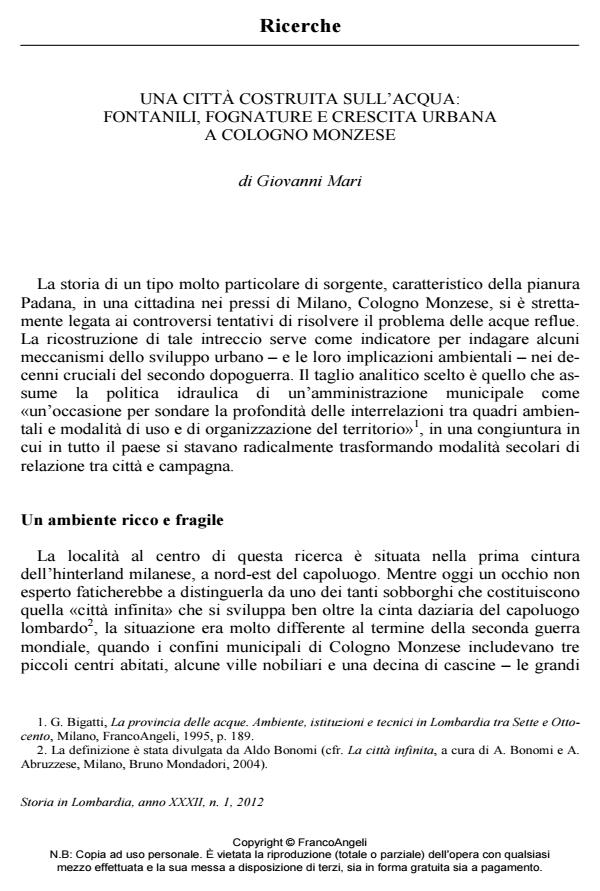Una città costruita sull’acqua: fontanili, fognature e crescita urbana a Cologno Monzese. A town built on water: fountains, sewage and urban growth in Cologno Monzese
Journal title STORIA IN LOMBARDIA
Author/s Giovanni Mari
Publishing Year 2013 Issue 2012/1-2
Language Italian Pages 21 P. 96-116 File size 839 KB
DOI 10.3280/SIL2012-001004
DOI is like a bar code for intellectual property: to have more infomation
click here
Below, you can see the article first page
If you want to buy this article in PDF format, you can do it, following the instructions to buy download credits

FrancoAngeli is member of Publishers International Linking Association, Inc (PILA), a not-for-profit association which run the CrossRef service enabling links to and from online scholarly content.
After World War II, in the outskirts of Milan a new town, Cologno Monzese, grew out of a small borough of peasants and craftsmen, with an impressive progression of urbanization linked to a similarly relevant demographic increase; this happened while Italy was experiencing its economic "miracle" and internal migrations were also booming. Thus, the uses of soil were radically transformed: in few years new urban quarters were built on lands that had long been mainly rural. And this had a strong impact on the thick network of irrigation originating from fontanili, springs typical of this part of the Po Valley. The roofing of the ditches is here seen as an indicator to understand environmental changes. And it allows us to grasp the priorities of the municipality, faced with the necessities set by the growth: as it was repeatedly chosen to postpone the construction of a sewage system, the canals were quickly transformed into dumping for civilian and industrial waste. Moreover, through the lack of conflicts linked to this course of events we are shown how deeply culture and mentality were also changing. Physically and visually vanished, water is nevertheless a key element in the inhabitants’ collective memory.
Keywords: Irrigation, sewage systems, Cologno Monzese, urbanization, urban planning
Giovanni Mari, Una città costruita sull’acqua: fontanili, fognature e crescita urbana a Cologno Monzese in "STORIA IN LOMBARDIA" 1-2/2012, pp 96-116, DOI: 10.3280/SIL2012-001004